
 Imperial Japanese Navy, 1,048 built
Imperial Japanese Navy, 1,048 built
Ka-15, Type 96 Rikko, G3M1, G3M2, G3M3 by Mitsubishi, Nakajima and Yokosuka
Bomber/Recce codename “Nell”, Transport codename “Tina”
The main twin engine torpedo bomber of the Imperial Japanese Navy in 1941 was the Mitsubishi G3M. It was soon codenamed by the allies “Nell”. After an already well-filled career in China, it was made famous notably by sinking Force Z’s Repulse and Prince of Wales, the attack on Darwin in February 1942, its rampage in the Dutch East Indies and sinking the heavy cruiser USS Chicago among others. Despite being obsolete, the G3M soldiered on in the 1944 Battle of the Philippines, but at that stage most were used as glider tugs, trainers, VIP transports or ASW patroller, a role in which it excelled. #ww2 #IJN #ImperialJapaneseNavy #pacificwar #japanesenavalaviation #mitsubishi #mistubishig3m
Prologue: The IJN land-based bombing capability

The sinking of Force Z, shining moment for the “Nell”
It is remarkable that of the three nations that in the interwar had a large and developed naval aviation, USA, the United Kingdom and Imperial Japan, the first two democratic powers were forbidden by law to have anything larger than carrier-based (usually single engine) or if larger, only seaplanes, floatplanes and flying boats were authorized. Only WW2 unlocked this peacetime limitations, both for the US Navy which until there relied on bombing capabilities of PBY Catalina flying boats, and the Fleet Air Arm on the British side. The Washington treaty was also a quickstarter for this. Feeling frustrated being being relegated to a second range tonnage, Japanese nationalists wanted to compensate by every means necessary.
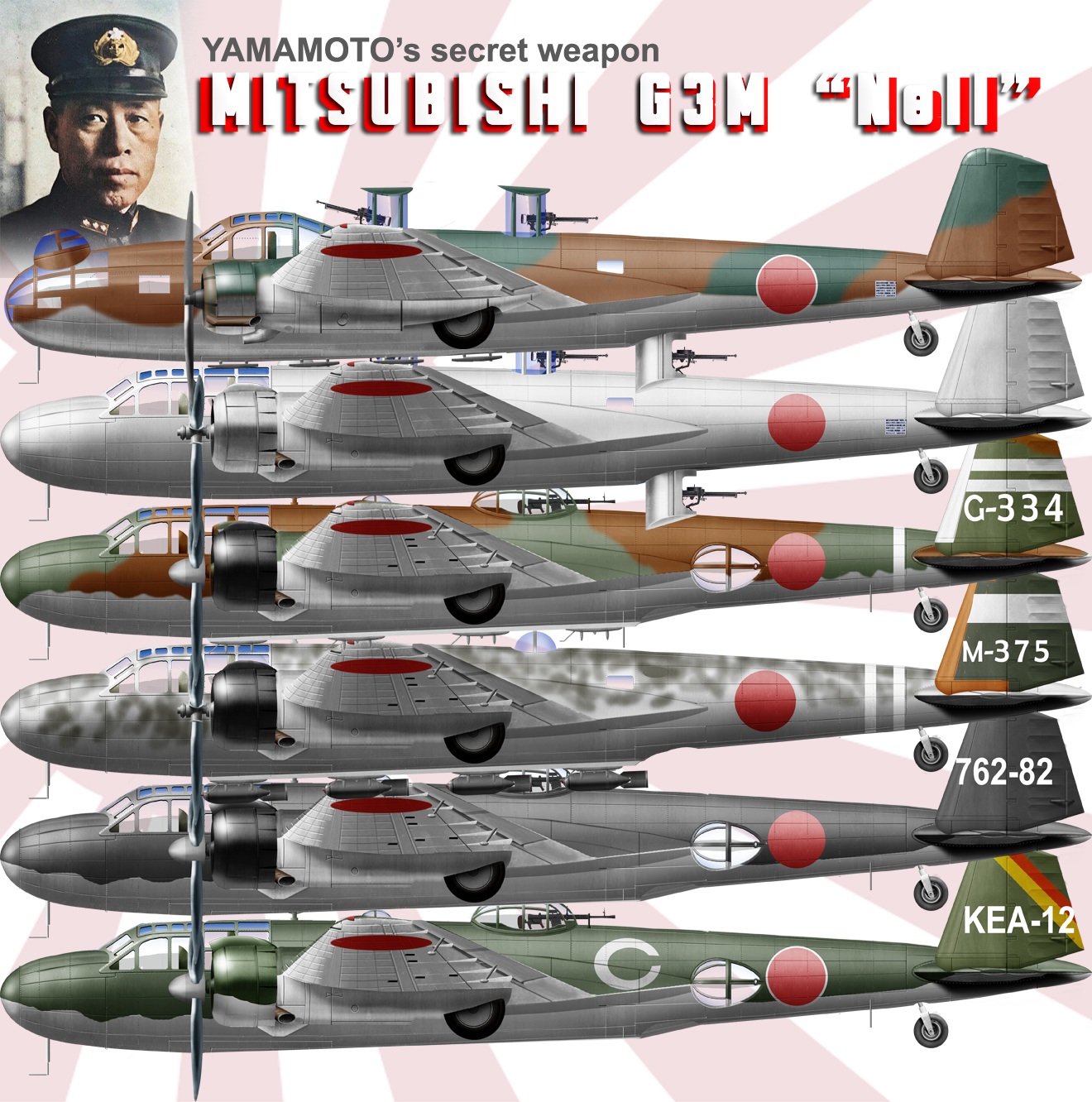
Compensating for the unfavorable situation developed with these restrictions in 1932, Naval Aviation Commander, Captain 1st Rank I. Yamamoto, developed a three-year plan to develop Japanese naval aviation and eliminate the gap in forces with the US and UK. According to the established tradition, the Imperial Japanese Navy preferred to be armed with equipment meeting its own needs and torpedo bombers were designated “kogekiki” (“strike aircraft”), while for army bombers the same meant “attack aircraft”, and “bakugeki” (“bomber”) being reserved for dive bombers.
The Imperial Japanese Navy eventually eliminated legal limitations, and for practical reasons. The hard work of Admiral Isoroku Yamamoto, a firm believer in airbone capabilities in the navy paid off as he which pushed towards the creation among other things to the “Kido Butai”. His strong influence in the Naval High Commission had it accepting a bomber aircraft with an unprecedented range. It would be indeed quite useful in the planned campaigns of China and the Pacific. The same reasoning pushed for the same criteria applied to the famous fighter A6M. This capability, as the “long lance” type 93 torpedoes was the set of superior capabilities of range and speed that would bring a qualitative edge above quantitatively superior USN and RN.
The rival Army corps probably opposed it at the diet to preserve its own proper advantages but Yamamoto and the Navy prevailed, probably on the argument that since no US or British bases in Asia had heavy bombing capabilities. A crucial step was won in 1934, that would bore fruit with a whole lineage, after the future G3M successor, the G4M “Betty”, and the Kyushu Q1W 東海 Tokai “Lorna” (1943) ASW patrol bomber, Yokosuka P1Y 銀河 Ginga “Frances” 1943 medium bomber, the gargantuan Nakajima G8N 連山 Renzan “Rita” 1944 Navy long-range heavy bomber and Tachikawa Ki-74 “Patsy” as a 1944 bomber reconnaissance model.
As for the G3M, as contemporary of the Martin Maryland, it took the same path in WW2. Obsolete as bomber, it excelled later for reconnaissance and patrol, having no heavy payload to carry. Its development was very much the result of Yamamoto’s strong will to give its navy a “long arm” in the air, capable to strike anywhere independent from its carrier force, and thus, complementary to the Kido Butai. Dotted with islands, he believed the Pacific can be turned into a network of unsinkable airfields. This model was intrumental in his grand strategy and unlocked the world’s first twin-engine land-bomber capacity organic to any naval air force anywhere…
Development of the G3M
Early Origins
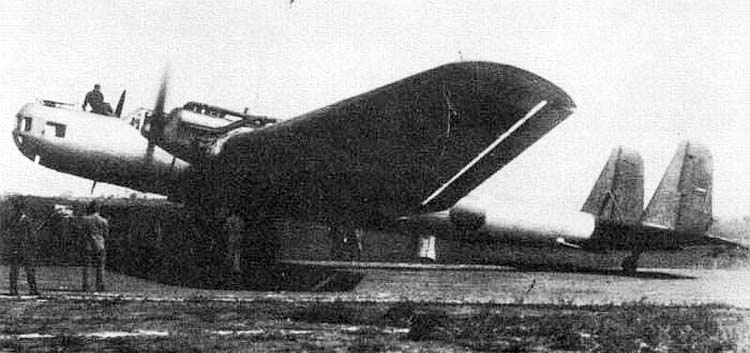
Hiro G2H1, an early (failed) attempt at a long range navy bomber
Work on the “96 Rikko” started in 1933, initiated by later Rear Admiral Isoroku Yamamoto, at the time a lower rank officer in charge of the technical development of the Kaigun Koku Hombu. Her formulated the concept of a “strike aircraft” for the fleet, modern, all-metal, long-range and land-based which task was to search and destroy enemy fleets far at sea. The Navy for this already had the heavy bomber designed by Shosa Jun Okamura at the Hirosho Naval Factory in 1932 (specification 7-Shi). It was developed as the Navy Type 95″ or “95 Daiko”, Hiro-sho G2H1. The prototype first flew on April 29, 1933 followed by a limited series of eight pre-production models, but it turned out to be slow and unresponsivle due to drag caused by the massive non-retractable landing gear. It proved both difficult to operate and to manufacture. The programme was cancelled and it was reused as transport aircraft.
Simultaneously with this early research the IJAAF (army aviation) through Mitsubishi made a technological leap forward after concluding negotiations with Junkers Flugzeugbau and Motorenwerke, A.G. in 1928, the leading manufacturer in all-metal multi-engine aircraft. Japan was given exclusive rights to many Junkers patents and licenses to produce the K-47 twin-engine light bomber and K-51 four-engine heavy bomber. Junkers engineers Eugen Shade and Willi Keil were sent to Mitsubishi to train Japanese specialists, forming over time talents such as Sueo Honjo, Kyunosuke Ozawa, Shinshiro Nakata, Kiro Takahashi, and others, trained in the United States and Europe. Sueo Honjo became the group’s bomber expert, chief designer for Mitsubishi on the Ki.1, Ki.2 and Ki.20, all by 1932 completed for the IJAAF.
Having studied the reasons for the clear technical superiority of the army Yamamoto was aware that Mitsubishi with its considerable experience was the most competent to receive its own 8-Shi out-of-competition specification, for his project of land-based twin-engine long-range reconnaissance aircraft. Yamamoto considered it more more as an experimental type for practicing long-range operations rather than true combat model, so Mitsubishi had free hands to precise itself the military requirements. It soon received the factory designation Ka-9, the programme being led by a team under chief designer Sueo Honjo, Tomio Kubo and Nobuhiko Kusabake.
From the Mitsubishi Ka-9 to the Ka-15
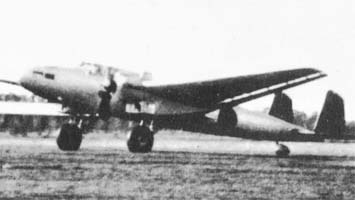 Like some Junkers prototypes, the G3M had an exceptionally clean airframe, with retractable landing gear and keeping some good features of the unsuccessful G2H1, notably the “double wing” and corrugated skin at the rear of the wing. The first prototype was powered by a pair of 650-horsepower Hiro Type 91 liquid-cooled engines (anemic by 1940 standards, acceptable in 1934) It took off under the control of chief test pilot Yoshitaka Kajima in April 1934, soon achieved success across the board. Based on a fuel reserve of “just” 4,200 liters the Ka-9 had a normal range of 4,400 km, maximum range of 6050 km and for its control and agility surpassed all previous twin-engine naval aircraft.
Like some Junkers prototypes, the G3M had an exceptionally clean airframe, with retractable landing gear and keeping some good features of the unsuccessful G2H1, notably the “double wing” and corrugated skin at the rear of the wing. The first prototype was powered by a pair of 650-horsepower Hiro Type 91 liquid-cooled engines (anemic by 1940 standards, acceptable in 1934) It took off under the control of chief test pilot Yoshitaka Kajima in April 1934, soon achieved success across the board. Based on a fuel reserve of “just” 4,200 liters the Ka-9 had a normal range of 4,400 km, maximum range of 6050 km and for its control and agility surpassed all previous twin-engine naval aircraft.
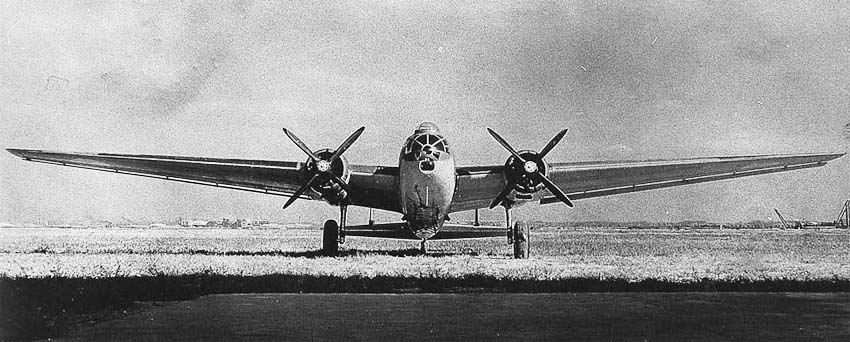
Glass nosed G3M1b
Admiral Yamamoto expressed his personal satisfaction but also said this was not useful to create two separate types of aircraft both for long-range reconnaissance and long-range bombing, so he issued Mitsubishi, still without competition, specification 9-Shi for the long-range ground-based bomber that can double as reconnaissance mode, as a direct development of the Ka-9, capable of carrying 800 kg as bomb load, a defensive armament of three 7.7 mm machine guns. Nakajima Hikoki K.K. however, the great competitor, soon learned about the deal and interfered, as being until then the main supplier of the IJNAF. Nakajima offered its long-range bomber LB-2, a developement of the Douglas DC-2 manufactured under license. However the IJNAF staff under Yamamoto rejected this proposal outright.
The prototype Ka.9, retroactively designated as G1M1 stayed a prototype for more tests. Still, it was very close to the final Ka-15. The success of the prototype led to an immediate order in 1934 dubbed “Project 79” fleet program, 9-Shi specification. This time, the specification made by Yamamoto clearly stated the payload, defensive armament, and operational requirements, still closely based on the G1M1 capabilities. Mitsubishi design team proposed soon plans for the Ka.15, which was an extrapolation of the Ka-9. It shared the same narrow, streamlined fuselage, but was noticeably fuller, with three retractable machine “gun turrets” a five-man crew, plus belly mounts for a torpedo. Main structural elements from the Ka.9 wing were retained, but the corrugated lining was replaced on the trailing edge by a smooth one and framing was reinforced as the fuselage, as it was planned to adopt much stronger engines and to support a heavy load. By June 1935, the first Ka.15 prototype was ready for testing. In July, test pilot Yoshitaka Kajima took off from Kagamigahara base.
Initial Requirement
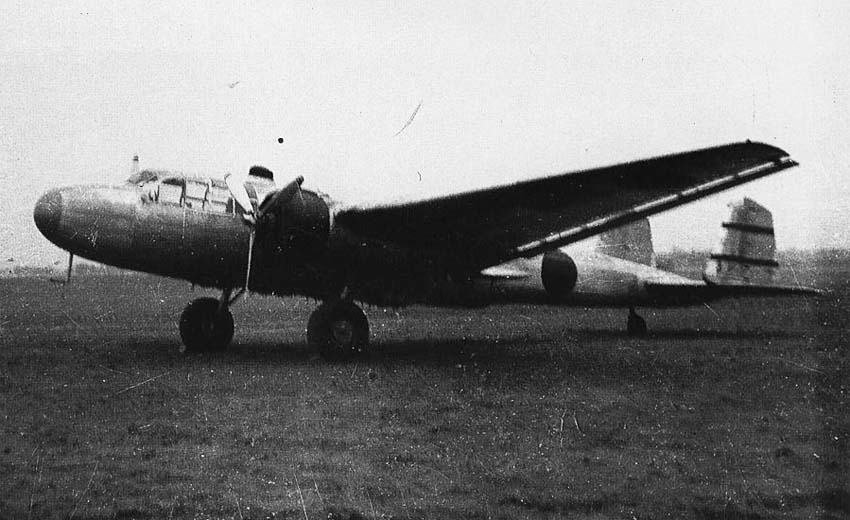
G3M1b
The G3M originated in a specification submitted to Mitsubishi from the Imperial Japanese Navy as said above, with proper voted funding. The bomber asked to the company, not used to that type until there, was to combined exceptionally long range and speed. It was precisely asked to accommodate an aerial torpedo of the new type developed to sink a battleship. Yamamoto, like Mitchell ou Douhet well before were all believers of bombers as “great equalizers” and it was believed that such models could sink a fleet at anchor. The speed requirements which went with the specifications were unseen for a bomber also in 1934, and only the Germans, notably Heinkel, and Dornier were to develop “escort free” models, meaning fast enough to not be worried by fighters of the time.
The combination of range would allow these bombers to strike for exmaple rear echelon objectives deep withing China from an enclave from the coast, or to be based in the Pacific and operate distant raids on US islands. And speed to do it with a minimum attack time. It was believed that if allied planners would not expect any bomber to have a superior range, the IJN could achieve a decisive blow, completely unexpected. Both speed and range forbade the use of escort fighters, so these bombers would operate alone.
The G3M became the embodiment of Japanese military aircraft design until 1941, placing all eggs in the same offensive basket, projecting bombs and torpedoes way out of range of any carrier-based aviation, emphasised over protection or defensive capabilities. In fact such trust was put in Mitsubishi to create a feathweight bomber, that it wouild have been impossible to catch by any known fighter at the time, which in asia were mostly second-rank biplanes. The best models ere reserved for the European Theater.
Following this logic, the G3M was radical enough to be designed without any form of defensive armament. It was the mosquito of its day. Its high-altitude performance were sufficient to evade interception (it was pre-radar time), as well as anti-aircraft fire, while high speed would be an advantage even if caught. It was also planned tp provide it an escort for some missions were the sky were contested (like in China) with the high performance Mitsubishi A5M to counter any enemy fighters, possibly after taking of frm closer airfields to be there when it mattered, or at the start of the leg (see later, range). While carrying a torpedo, which was by nature quite heavy and would have lowered down performances, its low-level stability and superior fighter escort were considered sufficient to deal with the ship-based AA of the time, or even carrier-based fighters.
Design development
A lightweight structure
The lightweight structure, absence of machine gun or corresponding crew at first for the early prototype design were considered essential to maintain the required high altitude speed, with a heavy payload. It was largely due to the average power obtained from the radial engines of the time. Meaning it only had a pilot and copilot/bombardier/radio/navigator seated in tandem forward, and the fuselage was very thin, reminiscent of the Dornier Do 17, the “flying pencil”, result of the previous developments made for the Mitsubishi Ka-9. The engine was the Type-91 three-row (W) liquid-cooled, 12-cylinder 27 l, 500 hp of design bureau No.11 of the Navy military unit Hiro. It was derived from the British Napier Lion and also equipped the Aichi E10A and E11A, Hiro, Kawanishi E7K and the Ka-9 prototype, and early Ka-15 ones.
Mitsubishi presented this Ka-15 as a development of their previous Ka-9/G1M1 reconnaissance model, with some room for improvement to be used as long range land-based medium bomber. This Ka 15 N°1 flew on July 1935, powered by two Hiro Type 91 radial engines capable of 750 hp installed in mid-set wings as for the Ka-9. Twenty more prototypes (pre-production models) still under the designation Ka-15 were ordered, and completed, three powered by the Hiro engine, the remaining 17 by the Mitsubishi Kinsei 2 (830 hp) or Mitsubishi Kinsei 3 (up to 910 hp), largely increasing the bomber’s performance. Thus in between, it was decided to add some defensive armament at last. But not to impair the flying caracteristics by having abulbous structure, it was decided to add two dorsal MG gun positions, in rectractable or telescopic “phone booth” style posts, glased, that would just popup when needed, and retracted inside the fuselage, leaving it perfectly flush.
 Perhaps after the too extreme N°1, modified prototypes did include up to three defensive machine gun emplacements. Still, the two dorsal ones, and from the glases nose variant, a rear belly gun position that was about the same cylinder shape but lowered down and retracted inside when not in use. The remainder of the Ka-15 thus varied between these noses and cockpit glassed sections and engines. But they all had the same fuselage, rear twin tail for stability, and wings, with engines mounted the same way each time. The wingspan was quite large for models that were supposed to be fast, but necessary to reach the altitude requirements.
Perhaps after the too extreme N°1, modified prototypes did include up to three defensive machine gun emplacements. Still, the two dorsal ones, and from the glases nose variant, a rear belly gun position that was about the same cylinder shape but lowered down and retracted inside when not in use. The remainder of the Ka-15 thus varied between these noses and cockpit glassed sections and engines. But they all had the same fuselage, rear twin tail for stability, and wings, with engines mounted the same way each time. The wingspan was quite large for models that were supposed to be fast, but necessary to reach the altitude requirements.
Testing new engines
The first two prototypes of the Ka.15 were powered by the Hiro Type 91 engines, first used on the Ka.9, but driving massive wooden 4-bladed fixed-pitch propellers. A better result was promised by the use of more powerful modern radial engines. At the end of the 20s, Mitsubishi actively sent its engineers for internships in European US companies, and by the mid-30s, a “dream team” in the engines departmen of the company was able to develop a number of promising powerful air-cooled aircraft engines. One of them was the two-row 14-cylinder radial “Shinten” rated for 920 hp, several prototypes of which, in 1935, underwent intensive testing.
They were experimentally installed on a single Ka.9/G1M1 airframe, increasing its speed by more than 20 km/h, but proving also extremely unreliable. In parallel, the third Ka.15 prototype was equipped with less powerful, but more maturei “Kinsei-2” rated for 830 hp. On the fourth Ka.15 prototype two 910 hp Kinsei-3s were installed, which in addition drove metal Hamilton-Standard variable-pitch propellers. Over the total of 21 Ka-15 prototypes with many variations the fourth prototype was by far the most promising and served as the basis for production. In June 1936, the project was approved as “Type 96-I Model 1 Naval Basic Medium Attack Aircraft” and Type 96-1 Rikko.
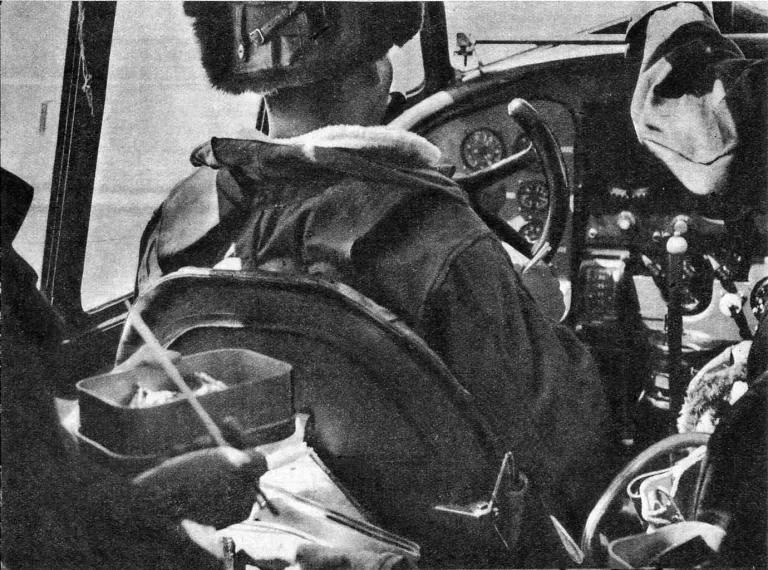
Aven after approval, tests went on. The fifth and sixth prototypes used the same Hiro Type 91 engines, one tested in the “Ominato” kokutai, northern Hokkaido in 1936 equipped with skis for cold climates operations. Once the Mitsubishi Kinsei 3 engines were selected for production, the four Hiro Type 91 prototypes were retroactively designated “G3M1a Model 1A”. The two Kinsei prototypes “G3M1b Model 1B”. They remained unofficial due to experimental testings. The first six prototypes were evaluated also at the Yokosuka Naval Test Center, and transferred to Tateyama Kokutai, Honshu, for proper military trials, bringing a wealth of infomations whereas production was setup at Mitsubishi.
They also received at this occasion their first press coverage in the summer of 1936. The only major hitch in the test program was the loss of the second prototype, crashing on the border between Korea and Manchukuo (crew of 5 died in the accident). It was attributed later to a malfunction of the wooden propeller, not helped by aileron vibration. From there, metal propellers were made mandatory while ailerons were redesigned notably for their mass distribution. Testing continued without accident.
In parallel, the IJNAF looked for ways to add features to the very basic design. It was immediately clear that the Ka.15 had more potential that expected and that the G3M1 would be able to successfully engage both ground and naval targets. Following the wishes of the fleet, the remaining 15 prototypes equipped with the same 830 hp Kinsei 2 engines, were modified into long-range high-altitude bombers, with redesigned fuselages.
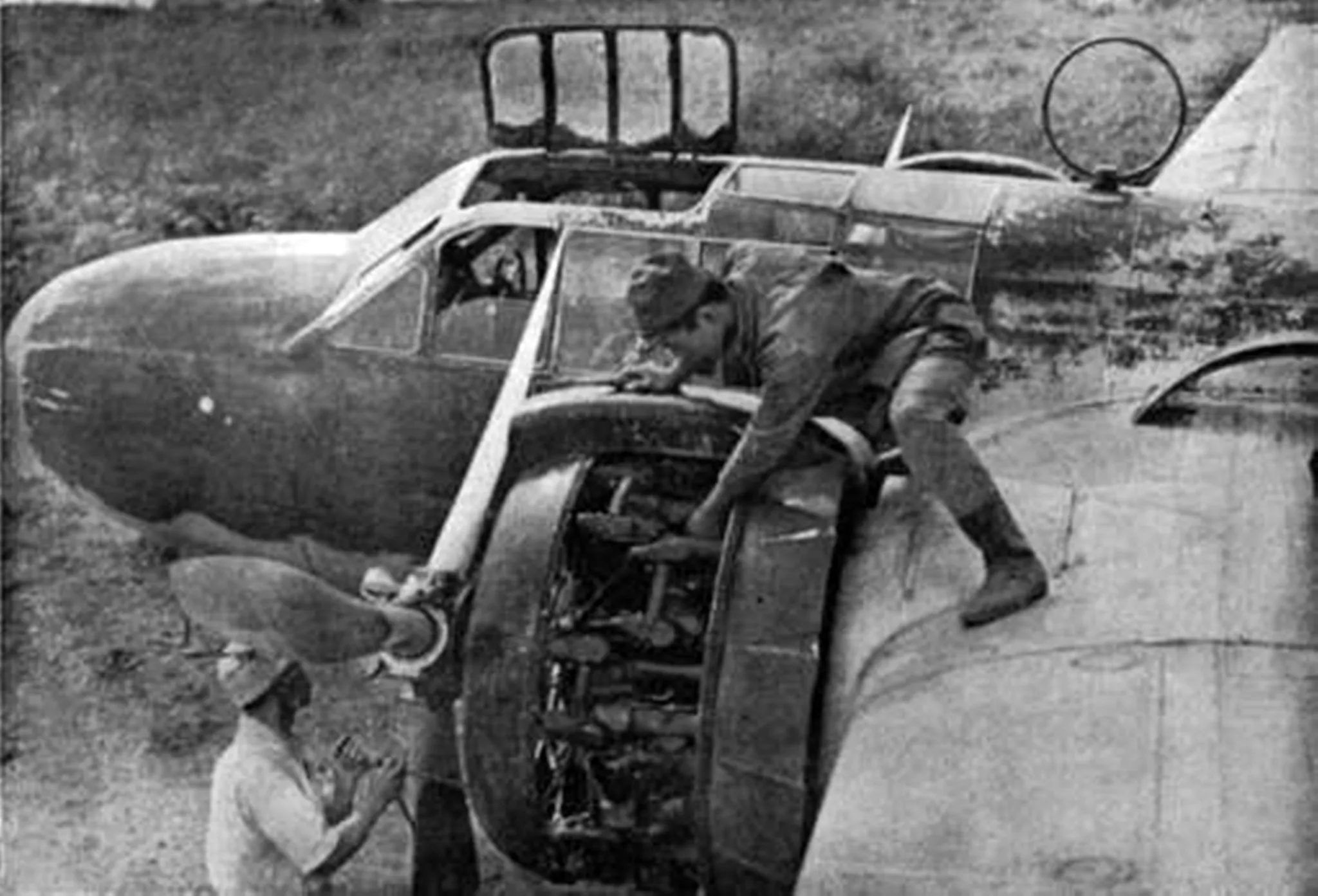
G3M2 Model 22 in maintenance
These aircraft had a new glazed nose housing the bombardier’s cockpit, and an astro-navigation dome for the navigator. Instead of a ventral torpedo mount, there were two universal torpedo mounts rated for 800 kg, and designed to mount bombs up to 250 kg. The eighth prototype had a larger spaced tail and the eleventh prototype received the new Kinsei 2 engines rated for 910 hp, still using Hamilton-Standard propellers. All early “flush noses” were Sent to the Tateyama Kokutai in 1936 for military trials under the unofficial designation G3M1c, or “model 1C” remaining in service for many years there. Meanwhile the glassed nose variants were not chosen for mass-produced, considering the “hard nose” model could also successfully perform the functions of a long-range bomber. This apparently did not impaired the bombardier’s task, as he still had a small window below the nose. Plus, this nose caused less drag and was easier to produce.
These Ka-15 thus had roughly three branching variants when accepted by the IJN and the unofficial designation of G3M1 were the following:
G3M1a: The three original prototypes with Hiro engines, solid nose
G3M1b: Next two prototypes, Kinsei 2 engines a still solid noses, one being tested with ski undercarriage
G3M1c: All remaining with redesigned cockpit, glazed nose.
They had in common to carry 800 kg of bombs externally, or a single torpedo (see later). Versions featuring a solid nose were armed with two 0.303 in Type 92 machine guns (copy of the Lewis) in the retractable dorsal turrets. They were assigned to various Kokutais for evaluations and service trials, however in order to bring some improvements to the ongoing, slow-paced first batch. Eventually the IJN decided to order the most promising G3M1 Model 11, a more elaborate Ka-15/G3M1a-b-c.
General design
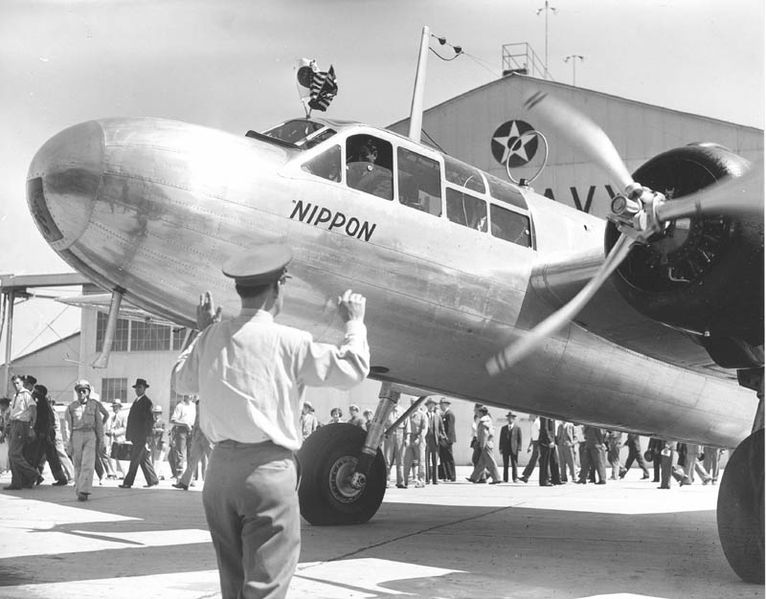
Mitsubishi “Nippon” in Oakland airport, 1939
Designed by Sueo Honjo’s western-educated engineers, the G3M kept had a very lightweight structure, devoid of any defensive armour nor self-sealing fuel tanks in order to not impact performances. The same philosophy prevailed for the A6M zero in 1937-38. This was the “secret feature” for air superioriy with limited engine power, and it was so enthusiastically supported to be reproduced for the G3M successor, the Mitsubishi G4M, soon called the “one shot lighter” by Allied pilots. The G3M used a crude bombsight with limited precision, just the one needed for its naval role, knowing a battleship was quite a large target. High altitide precision bombing was never a thing. The attack tactics developed early on was a massive “wave” formation eliminating the need for high-precision.
The introduction of the Model 1C led to a significant revision in the configuration for the production G3M1. Evaluation testing of Ka.15 prototypes at Tateyama showed the cockpit was too cramped. This designers had to make for a new roomy one, which became standard on all versions. A total of 34 G3M1s were built in 1936 and early 1937, ludricrously slow for “mass production” but for the M1 it was more a pre-production batch. On the last 12 Model 1, the standard roomy cabin was installed, and new crew accommodation became standard.
Armament
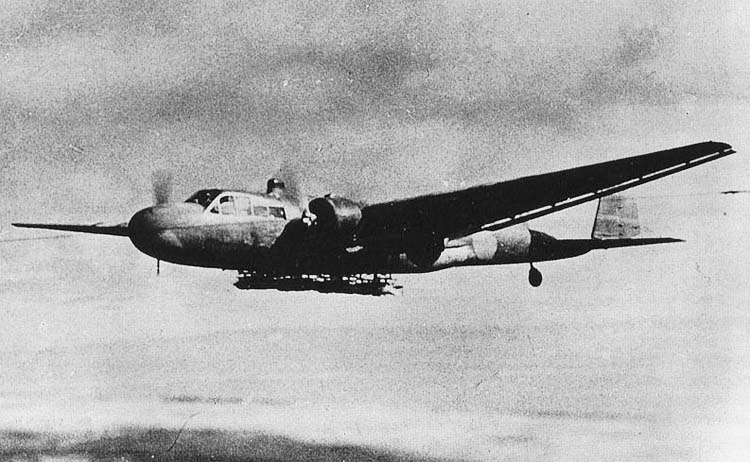
G3M1 with its full external 800 kgs bomb load
Cannons and machine guns
The armament varied among models, but the standard was fixed on the G3M2 model 21, to one 20 mm (0.79 in) Type 99 cannon in rear dorsal turret and four 7.7 mm (0.30 in) Type 92 machine gun in the nose for frontal attacks, placed left and right and reloadable internally by the crew, the last two in a single retractable forward dorsal turret. The Type 99 cannon was derived from the Swiss Oerlikon under licence, weighting 23 kg (51 lb) for 1,330 mm (52 in) in lenght, using a 20×72RB round 0.787 in. The gun was belt-fed and used an API Blowback, capable of 520 rpm with a muzzle velocity of 600 m/s (2,000 ft/s). The Type 92 LMG was a derivative of the Lewis gun, gas operated, furing 7.7x56R Type 87 rounds, Gas operated, with a 97-round pan magazine 600 rpm at 743 m/s (2,440 ft/s).
Bombs
Bombs were carried externally, there was no bomb bay as the model was to be used as reconnaissance aircraft as well. It seems drag caused by bombs was not taken in consideration, and the load could not exceed 800 kg (1,800 lb), which was pretty weak by 1941 standards. Usually these were eight standard 100 kgs HE bombs installed under two rows of four mounts. The latter were universal, and could be rapidly adapted to swap for an aerial torpedo.
Type 91 Aerial Torpedo
According to navweaps, the latter was limited to a 800 kgs model and thus, operated a single 45 cm (17.7″) Type 91 (1931) Mod 1. This model was developed from 1931, introduced in 1933, it weighted 1,728 lbs. (784 kg) for an Overall Length of 208 in (5.275 m), negative Buoyancy of 227 lbs. (103 kg) and carrying an explosive Charge of 331 lbs. (150 kg) Type 97. Powered by a 140 HP Kerosene-air wet-heater, it had a single setting, 2,200 yards (2,000 m) at 41-43 knots depending on sea conditions. The type was used by the G3M until the introduction of the model 2 in 1941, but this was still the type used to sink force Z capital ships. The Mod 2 had the same perf. but carried a 452 lbs. (205 kg) Type 97 warhead, and the mod 3 (1942) a 529 lbs. (240 kg) Type 97 warhead.
Evolution and variant
Ka-15

Mitsubishi answered the stringent requirements with the Ka-15 (factory prototype deignation), a serie of Prototypes with either Hiro Type 91 (559 kW/750 hp) engines, or later Mitsubishi Kinsei 2 (619 kW/830 hp), or Mitsubishi Kinsei 3 (679 kW/910 hp) engines and glass or solid nose. 21 built.
G3M1a/c
Redesignated prototypes with the Hiro Type 91/Mitsubishi Kinsei engines and glass nose (part of the 21 above).
G3M1 Model 11
Land-based bomber navy Type 96, extended cabin, revised cover, fixed-pitch propeller, 34 built
G3M1-L
G3M1 reconverted into military transports, Mitsubishi Kinsei 45 (802 kW/1,075 hp) engines.
Towards the G3M2
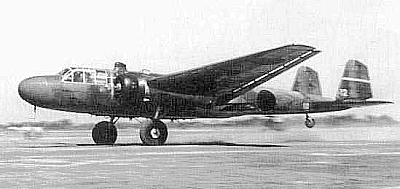
G3M1 in 1937
The first pre-production batch entered service in the “Kanoya”, “Kisarazu” and “Ominato” kokutai. By the summer of 1937, the 96-1 Rikko became their standard bomber. As Mitsubishi ramped up production, a new version of the Kinsei engine became available, the Model 41 rated for 1,175 hp. It was installed on the airframe during production in early 1937, a modification designated G3M2 “Type 96-2”, or “model 2” or “96-2 Rikko” (later model 21). This model had significant internal changes, additional fuel tanks, no retractable machine gun turrets as lower turret for a pair of onboard machine-gun nests and dorsal “bulge” with a 20 mm cannon under transparent fairing. The basic G3M2 remained in production until the end of 1941, with some minor changes in equipment and armament.
G3M2 Model 21
First production standard (343) with new engines, more fuel capacity and dorsal turret, also made by Nakajima.
G3M2 Model 22
Single upper turret with glass side positions. 238 built.
Nakajima’s G3M3
Nakajima took part in the production effort (having far larger industrial capacity than Mitsubishi) and improved the G3M which became the G3M3 (Model 23), but still also produced for a time the G3M2 on orders of the IJN, increasingly frustrated about the slow delivery. Having much more powerful engines, increased fuel capacity, but still no protection. These Nakajima models were mass-produced in comparison to the slower pace of mitsubishi models. They arrived just in time by 1941, maintained in service until 1944 and used alongside the G3M2 for long-range maritime reconnaissance, but with a radar.
Nakajima G3M3 Model 23
412 M2/M3, Better engines, more fuel capacity.
Yokosuka’s Transport variants
The G3M was also derived into the transport versions G3M-L and L3Y this time built by Yokosuka. In service, the Allies code designation was “Nell” for the bomber M1/reconnaissance M2/ASW patrol aircraft M2/M3, and “Tina” in the transport version M/Y from Yokosuka.
Yokosuka L3Y1 Model 11
Yokosuka Transport navy Type 96, advanced conversion of G3M1.
Yokosuka L3Y2 Model 12
Modification of G3M2 with Mitsubishi Kinsei engines
Mitsubishi Transport
In 1939, the Navy, which lacked command and control aircraft, decided to re-equip part of the Type-96 models with VTS-96. Weapons were dismantled, extra fuselage tanks and a passenger cabin for 10 seats were installed. During the war, part of these were used for landing training. They were produced by Yokosuka as type L3Y. Circa 12 converted G3M2 Model 21 used by civil operators like Nippon Koku K.K.
“Nippon” and other civilian variants
For the prestige of civil aviation, in 1939, Japan Airlines decided to make several round-the-world flights. Japanese Airlines did lacked a civilian aircraft of required range, which led Mitsubishi to offer the leasing of the Type-96, which had the greatest range in Japanese aviation. The civilian version was named Mitsubishi-cargo-passenger (“Mitsubishi sohatsu yusoki”). Since 1939, Japan Airlines has had 5 of these at its disposal. They ended with the following designations:
“Japan” (Nippon) J-BACI – converted machine Type 96-2-1. In 1939, flew round the world in eight day to promote the newspaper Mainichi Shimbun.
“Wind” (Soyokaze) J-BEOA flew by the spring of 1939, on the route Tokyo→Taipei→Guangzhou→Bangkok→Calcutta→Karachi→Basra→Tehran, for an official visit to Iran for the wedding of Prince M. Pahlavi. A month later, the same took part in the Iranian Air Force parade.
“Yamato Country” J-BEOC which in 1940 made a non-stop flight to Thailand and later transported deputy Ryoichi Sasakawa to Italy for a personal audience with B. Mussolini.
“Dragon wind” (Ryufu) J-BEOE in 1940 made a non-stop flight to Thailand.
“Wind in the Pines” (Matsukaze) J-BEOG made from the summer of 1941, regular flights to Thailand.
Specs. G3M2 Model 21 |
|
| Crew: | 7: Pilot, co-pilot/radio/navigator, +4 MG gunners |
| Fuselage Lenght | 16.45 m (54 ft) |
| Wingspan | 25 m (82 ft) |
| Wing area | 75 m2 (810 sq ft) |
| Height | 3.68 m (12 ft) |
| Empty weight: | 4,965 kg (10,946 lb) |
| Gross weight: | 8,000 kg (17,637 lb) |
| Propeller: | 3-bladed metal propeller |
| Engines: | 2× Mitsubishi Kinsei 14-cyl. air-cooled radial piston engines, 791 kW (1,061 hp) each |
| Top speed: | 375 km/h (233 mph, 202 kn), cruise 280 km/h (170 mph, 150 kn) |
| Climb rate: | 6 m/s (1,200 ft/min) |
| Fuel/Range: | 3,874 L (852.2 imp gal; 1,023.4 US gal), 4,400 km (2,700 mi, 2,400 nmi) |
| Service ceiling: | 9,200 m (30,200 ft) |
| Armament (Defensive) | 1× 20 mm Type 99 rear dorsal turret, 4× 7.7 mm Type 92 cockpit, left right side, retractable fwd dorsal turret. |
| Military payload | 800 kg (1,800 lb) bombs or aerial torpedo |
The G3M in action
Combat debuts in China (1937-1940)
After the Sino-Japanese “Incident” on Mukden bridge on July 7, 1937, the Kanoya and Kisarazu Kokutai equipped with Model 1 and 2 of the G3M, were put on high alert and started a grueling training to master ultra long range bombing missions. The imperial Navy hoped to quickly end the Chinese campaign by massive bombardments of Chinese targets. From the Japanese point of view, the key to victory was Shanghai in central China (mouth of the Yangtze River) and this was less than 200 miles upriver to Chiang Kai-shek’s capital at Nanjing. The destruction of the Chinese air force and capture of Shanghai were thus paramount as planned by February 1932. However by 1937, Chiang Kai-shek prepared for war, hiring Claire Lee Chennault, to build a modern China Air Force with aircraft purchased in the UK, Italy, France, Germany, USSR and USA, while production facilities were set up in China to produce more under license. When the army aviation attacked Shanghai, the CAF was not only numerous but well organized and put quite a resistance.
First phase, 1937
On August 14, G3Ms from “Kanoya” Kokutai in Taipei (Formosa, now Taiwan) ran over 400 miles to the north and struck at Hangzhou. Unfortunately, one of Chennault’s tactical schools was located in Hangzhou. CAF fighters there sported the latest Curtiss Hawk II (65 in service) and Hawk III (68 in service) and Boeing 281 “Peashooter”. They were waiting for the 18 G3Ms and shot down six without loss. The same day as it happened, the CAF sent over 100 bombers and fighters on the IJN anchored in Shanghai, and over Nanjing they shoot down 20 IJN Aichi D1A “Suzy” bomber carrier. This day is celebrated today as the Taiwanese Air Force Day.
Losses were made up for and the next day taking off from Omura (Kyushu) 24 G3Ms of the “Kizarazu” Kokutai flew over 1,150 miles and attacked Shanghai and Nanjing, with no losses to report. The IJN annunced to the press the success of its “Transoceanic bombardment” of China with fanfare. But it was also reported with some alarm in Western circles. European observers arrived on the Sino-Japanese front to learn more about the Japanese bombing program, believing they were of German origin due to a superficial resemblance with the Junkers Ju-86. They participated in the dangerous delusions of the west before Pearl Harbor that all Japanese models were simply copies of foreign types. And still, the 1933 G3M was more advanced than the German Ju-86 (1935).
However the Chinese reorganized and the IJN lost 54 bombers over Nanjing in a single dau. Night bombing proved also as expensive as Chennault mad sure to train also night squadrons while the capital was saturated with searchlights. “Transoceanic raids” ended due to the crippling losses. It showed the G3M1/G3M2 were doomed without fighter escorts with their weak defensive armament. And their low bomb load meant only minor damage. The air war around Shanghai showed Chinese mastery and the offensive was suspended for the provision of Type 96 fighters (A5M) to China and provide cover.
With the help of the Mitsubishi A5M1 and A5M2a by September 1937, the offensive resumed with almost daily raids from G3M2s of “Kanoya” and “Kizarazu” Kokutai, joined by the 2nd Koku Sentai of Kodai Airfield, Shanghai notably G3Ms of the 13th Kokutai. With the arrival of the A5M fighter as escort, the situation reversed and by the fall of October, they had practically cleared the skies over Nanjing, allowing the G3Ms to be stationed in Changzhou and operate more raids. The whole area between Changzhou and Nanjing became Japanese in the sky, pilots speaking of “rabbits hunt”.
The Panay Incident
On December 12, 1937 however, three G3M1s under command of Lieutenant Shigeharu Murata patrolling their sector on the Yangtze River between Wuhu and Nanjing mistook the gunboat PR-5 USS Panay evacuating the American embassy from Nanjing with their families, for a Chinese one (as officially stated). The G3Ms dropped six 60-kg bombs, one hitting the wheelhouse, destroying the radio post and one 3-in gun. Next, the G3Ms retired and the gunboat was left to be finished off by twelve D1A “Suzy” dive bombers dropping 250-kg bombs, also sinking the two river tankers that tried to take the crippled ship in tow. The first assault lasted for 40 minutes, and to add insult to injury, the three G3Ms came back later to drop several more 60-kg bombs until the gunboat disappeared beneath the waves with the captain and part of the crew that did not abandon ship already with the members of the embassy, swmming to shore, shocked and terrified. Some sailors as reported in the press later even stated they were gunned and bombed by E8N “Dave” floatplanes while floundering in the water. It’s a miracle that only three American sailors died in this, even, but 30 were wounded. The civilian population suffered far worse due to all the near-misses. The Japanese systematically gunned and bombs all the refugee boats trying to leave the city on the Yangtse. The next day, Nanjing fell.
Mainland China (1938-39)

G3M2s in formation over China, 1940 or 1941. By the time, their original olive green livery was largey worn out, leaving the factory grey underpaint or even bare metal, creating impromptu patterns (pinterest).
After the fall of Nanjing, the G3M long-range opened the interior of mainland China, but this prevented fighter escort. The Chinese CAF was reinforced by early 1938, and this time even included squadrons of Soviet volunteers from Hankow, 400 miles west of Shanghai. Raids on Hankow in the spring and summer of 1938 meant again sever losses for the G3M. In one raid, out of 36 G3Ms, the I-16 fighters shot down 23 for no loss. A month later a raid was this time escorted by A5M fighters taking off from just taken Wuhu and with additional external tanks. But they could not stay over the target for more than a few minutes. Japanese Losses decreased. At the same time in Japan, the G3M production ramped up with 130 in 1937, 186 in 1938, and the G3M2 became at the time the largest serial aircraft in Japan.
Later phase (1939-1940)

On May 28, 1938, there was another G3M raid on Canton, killing 600 civilians, injuring 900, and raids went on all summer, added with the newly formed “Mihoro” kokutai operating from Formosa. The humanitarian catastrophe was reported by the press but only led to mere condemnation from the displomatic world. In June 1938 at least, the US, UK and Soviet Union publicly condemned these bombings while Germany and Italy kept quiet while undertaking the same in Spain. Canton fell on October 21, 1938 and the Overall Japanese command delefated the responsibility of the entire Chinese coast to the Navy. Hankow surrendered later but Chiang Kai-shek moved his capital to Chongqing, 500 miles west of Hankow. Again, G3Ms were forced to raids at a range interdicting fighter escort. The first raid on Chongqing took place in January 1939 and in the spring, the population left these large cities for the unoccupied NW part of China. G3M bombers from Formosa raided Fuzhou daily, and from Hainan Island, Kunming. By May, the existing Chinese forces swapped to guerrilla warfare. The bombing resumed the next spring and by the summer of 1940, 100 G3Ms from four Kokutai (Kanoya, Takao, 13th and 15th) operated over the eastern regions daily.
Planned replacement (1940)


G4M1s, from pinterest
This long four years enabled Mitsubishi to perfect its bomber in many ways and it reached the top of its development by September 1940. The 399th serial model, a G3M2 Model 22 arrived in China displaying its new humpbacked cannon turret, over an new streamlined fuselage. It was envisioned to bring even more firepower to the G3M but the production of the G6M was preferred. By the fall of 1940n the G3M equipped 10 Kokutai in China, including Formosa, and Japan, the “Chitose”, “Genzan”, “Kanoya”, “Kisarazu”, “Mihoro”, “Ominato”, “Takao” 1st 3rd and 13th. At the time, the G3M was secheduled for retirement, replaced by the G4M1 by early 1940, which was larger, faster, and carried a much larger payload (428 km/h, 2,852 km range, one ton of bombs).
However, the need for the G3M2 was too great to be replaced, and while ironing out the defaults of the G4M, production (also by Nakajima from April 1941) of the G3M2 went on at a greater pace than ever. Changes to the design were still made, with more 7.7 mm machine guns. Its only when Nakajima took over for good that it freed Mitsubishi to setup production of the G4M1. In June 1942, the last mosification, with the Kinsei 57 engines and introduced and it went on still by February 1943, until it was stopped for good. The G3M remained the workhorse of the imperial fleet still in China: By the autumn of 1940, Chongqing started to be attacked again this time with G4M1 bombers escorted by the Mitsubishi A6M2 which had at kast the long-range required (same as the G3M model 22).
Early Pacific Phase (1941-42)

G4M2 taking part in the Coral Sea Battle, involved in the destruction of USS Lexington (lex-for-lexington.tumblr.com) from pinterest
Sensing the inevitable with tensions rising sky high with the US, by August 1941, the IJNAF withdrew its long range ground bombers from China,only retaining units in French Indo-China, Japan and Taiwan. By December 1941, more than 200 G3Ms were concentrated on positions outside Japan, plus 52 in the home islands as backup, generally older models. There were very few G3M1s left from the fight in China.
Converted G3Ms:

G3M2-Kai, from pinterest
Existing G3M2 airframes were tailored for specialized duties, since its place as bomber was now taken by the G4M. The first was the trainer appearing in 1938 already, made from battle-damaged G3M2 Model 21, repaired and modified with double commands, as the G3M2-K. They served in 1939-43 with the “Matsushima”, “Tateyama” and “Yokosuka” kokutai advanced flight training, gorming also later future pilots of the G4M. It seems some still flew by the spring of 1944.
Another conversion was the G3M2-Kai which became a specialized high-altitude reconnaissance aircraft based on the G3M2 Model 22 but lightened up, devoid or armament and equipped with a 50 cm automatic camera with wide-angle lens in the bombardier’s position, and 9,000 m ceiling, to avoid being intercepted. The first G3M2-Kai arrived by February 1941, tested at the Yokosuka Naval Test Center by in April. In all 36 G3M2-Kai were produced, joining three squadrons for “special assignments”, all in the 3rd kokutai, Formosa (Captain II rank Yoshio Kamei). First mission was reconnaissance over the northern Philippines from Takao aifield, on April 18, 1941. The summer saw them in photo reconnaissance in the southern Philippines and also over Rabaul, New Britain, Guam and French Indochina. G3M2-Kai operated next from Palau, Truk, Tinian and Hainan and were also tasked of communications and navigation. By late November 1941 they returned over the Philippines, painted light grey and unmarked, to be harder to spot. They were never intercepted in all these missions, although sometimes spotted by US air defenses. Soon however, the US were about to introduce portable radar stations.
1942 Combat Operations:

Force Z attack, unknown src, from pinterest
On December 8, 1941, Japan time, G3M2 from “Takao” kokutai took off in southern Formosa to carpet-bomb American airfields in the north of the Philippines, a mission reported due to dense fog to 10.45, after the wreck of one trying to take off in the fog. 53 of these attacked Clark Field, and other auxiliary airfields. The Indochina Kokutai soon attacked the British in Singapore and the Genzan kokutai (torpedo bombers) started to search for Force Z in Malay Strait. On December 10, the IJN command learned Repulse and Prince of Wales were spotted, tracked, and bombed, torpedoed on two waves, until sank. This was a formidable propaganda coup for Japan and the end of British hopes in Asia.
The G3Ms soon raided the Philippines, Malaya, Singapore, and the Dutch East Indies. By early February 1942, those from the 4th kokutai arrived at in Rabaul, New Britain, taking part in the Battle of the Coral Sea in May, losing four of the 27 deployed. They also took part in the first battles of Guadalcanal, Solomon, from August 1942. Meanwhile, G3M2 units in mainland Japan were assigned defensive roles only and by April 18, 1942, 29 G3M2 of “Kisarazu” Kokutai took off searching an American carrier group sighted from a submarine on April 10, (The Doolittle Raid TF) but they were missed and the latter launched from 200 miles off the coast. Soon after reports of bombings on Tokyo, Yokohama, Osaka, Kobe and Nagoya “Kisarazu” Kokutai scrambled again, but found nnothing. This unit was later dispatched in Timor, and by mid-August 1942, to Rabaul and the battle of Guadalcanal. Rabaul ny October 1942 grouped five G3M units, most equipped with the G3M3 Model 23.
Late war, 1943-44

G3M prepared to take off from an airfield, probably Rabaul (ww2incolor.com), from pinterest
As a result of the reorganization, units equipped with the G3M2-3 named “Chitose”, “Genzan”, “Kisarazu”, “Misazoa”, and 4th Kokutai at Rabaul became the 703rd, 755th, 707th, 705th, 702nd kokutai, while elswehwere the “Kanoya”, “Mihoro”, “Takao” became the 751st, 701st, and 753rd kokutai. New kokutai were formed with late production Nakajima G3M3s, the 772nd kokutai (1944 for the defense of the Philippines) and all that remained became “Special Attacks” unit back Japan.
Another unit created was the specialized night torpedo 762nd kokutai formed in the Philippines in November 1944. From mid-1943 already the G3M was gradually withdrawn from first line units, reoriented to transport, communications and patrol work in new units. These were all smaller independent IJNAF unit. There were also tests in 1941 to convert the G3M as towing aircraft for the air assault glider Kugisho MXY5 (11 fully armed paratroopers) but the program being low priority it ended soon. By 1944 the faulty MXY5a airframe was still being perfect when the program was cancelled. IJN paratroops still were sent for suicide missions late in the war, but never using gliders.
As patrol aircraft (1944-45)

A fatigued camouflage G3M3 in formation (travelforaircraft.wordpress.com) via pinterest
The most effective modification of G3M was as general purpose patrol aircraft. The first G3M3s used for this differed in no way from standard bombers, and they were assigned to the 901st and 951st Kokutai, Dai-Ichi Goei Kantai (“First Escort Fleet”) established in 1944, part of Kaijyo Goei Sotai (“General Escort Command”), an evolution of the Dai-Ichi Goei Chutai (First Escort Squadron) created by November 1943 to protect shipping lanes from Singapore to the Japanese Islands, threatened by US submarines. The G3M3s became the first dedicated escort models for naval convoys, and soon tactics and doctrines were developed to hunt down US submarines. They flew over Saigon, Singapore, Manila, Takao, Okinawa and Tateyama, Sumatra and from bases along the Chinese coast. These G3M3s Model 23s were gradually modified with an early search radar, starting with the 901st kokutai in Manila, detecting the huge US armada coming for the battle in the Philippine Sea on October 24, 1944.

By July 1944, the escort squadron was transformed into a “fleet” and upon reports sent back to Nakajima, a specialized “sub hunter” appeared, the G3M3-Q. Main difference was its magnetic anomaly detector. It was applied to between 20 to 40 G3Ms withdrawn from frontline kokutai. Some even tested a 20-mm cannon mounted under the fuselage at a slightly downward angle. At least 2 aircraft were modified. The G3M3-Q campaign against allied submarines became relatively successful, the same way the allies performed agains U-Boats over the atlantic. But these were only operated by the 901st kokutai until the end of 1944. They announced at that time 20 Allied submarines sunk, but it is not corroborated.
Conversion for former frontline models was also done at Yokosuka, as transport aircraft but the effort started already by 1937, based on the G3M1 Model 1. These efforts culminated into the L3Y1 “Type 96, model 11” sometimes called G3M1d and “96 Yu”, and latter conversions as said. The exact number of such models is unknown, probably low as they were only use as VIP transports, capitalizing on their great speed, high altitude to avoid turbulences and longer range. They criss-crossed the pacific with top brass aboard until 1945, and it seems were rarely intercepted as being isolated but perhaps by the P38 lighting.
References
Evgeny Aranov. Bomber Mitsubishi G3M1/2/3
Andrey Firsov. Japanese aviation
Aviation and Time. A. Demin. Air Dragons of the Middle Kingdom
Rene J Francillion. Japanese Aircraft of the Pacific War
Aircraft Profile 160. Rene J. Francillon. Mitsubishi G3M “Nell”
Aircam. Richard M.Bueschel. Mitsubishi/Nakajima G3M1/2/3, Kusho L3Y1/2 in Japanese Naval Air Service
Burin Do. FAWO. Mitsubishi Type 96 Attack Bomber (G3M)
Ferkl, Martin (2002). Mitsubishi G4M Betty. Revi Publications.
Murphy, Justin D.; McNiece, Mathew A. (1979). Military Aircraft, 1919-1945. Putnam & Company Limited.
Bridgwater, H.C. and Scott, Peter. Combat Colours Number 4: Pearl Harbor and Beyond, December 1941 to May 1942. Guideline Publications
Bueschel, Richard M. (1972). Mitsubishi/Nakajima G3M1/2/3, Kusho L3Y1/2 in Japanese Naval Air Service. Osprey Publishing
Francillon, PhD., René J. (1969). Imperial Japanese Navy Bombers of World War Two. Hylton Lacy Publishers Ltd.
Francillon, PhD., René J. (1979). Japanese Aircraft of the Pacific War. Putnam and Company.
Francillon, PhD., René J. (1967). Mitsubishi G3M “Nell” Aircraft Profile 160). Profile Publications Ltd.
Horodyski, Joseph M. “British Gamble In Asian Waters”. Military Heritage, December 2001.
Shores, Christopher with Brian Cull and Yasuho Izawa. Bloody Shambles. Volume One, Grub Street Publishing 2002.
Thorpe, Donald W. Japanese Naval Air Force Camouflage and Markings World War II.Aero Publishers Inc., 1977
Tons of photos (destinationsjourney.com)
historyofwar.org
airpages.ru
aviastar.org
militaryfactory.com
combinedfleet.com
airwar.ru
en.wikipedia.org
warmachinesdrawn.blogspot.com
Model Kits

G3M2 on scalemates.com
General query, G3M. A popular subject at least for Japanese kit makers. Hasegawa and LS covered most versions at 1:72
Gallery
Authors profiles chronology

Prototype Ka-15, glassed nose

G3M1 Kisarazu Kokutai 1st Chiba April 1937

G3M1 Kokutai Ominato Autumn 1937

G3M2 Genzan Naval Air Group, 3rd Squadron October 1941

G3M2 Genzan NAG Saigon Indochina December 1941, attack on Force Z

G3M2 part of the attack on Force Z and more specifically HMS Prince of Wales, 10 December 1941.

G3M2 Ominato Kokutai, Sichuan May 1941

G3M3 762 Naval Air Corp Formosa May 1944

G3M3 901 Naval Air Corps 1st escort Fighter Fleet ASW patrol July 1944
(More to come)
Photos
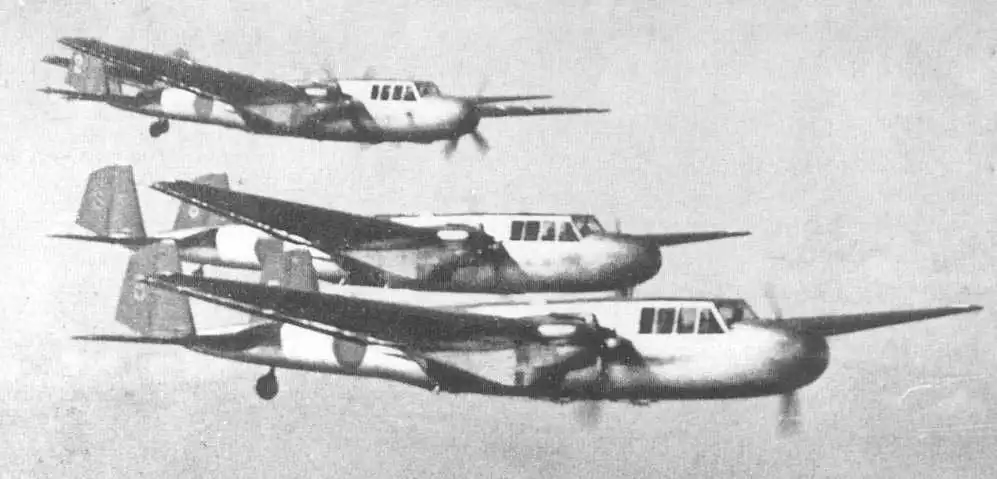
The first three Ka15 (G3M1a) in formation during operational tests in Kokutai
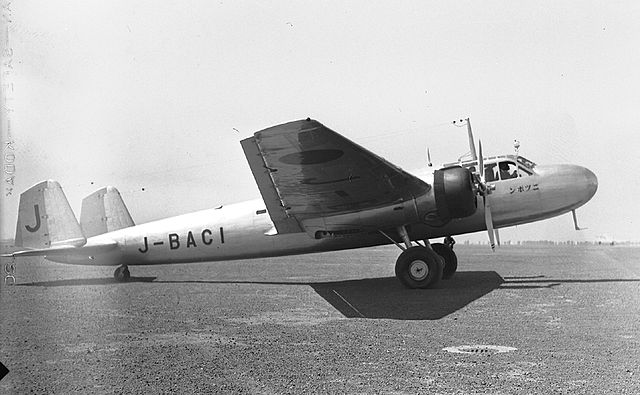
“Nippon”, J-Baci in 1939
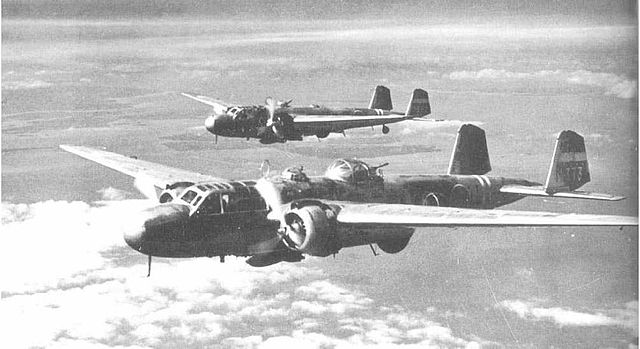
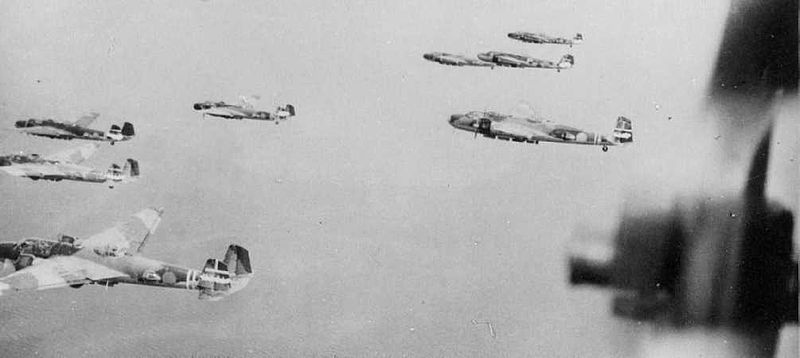
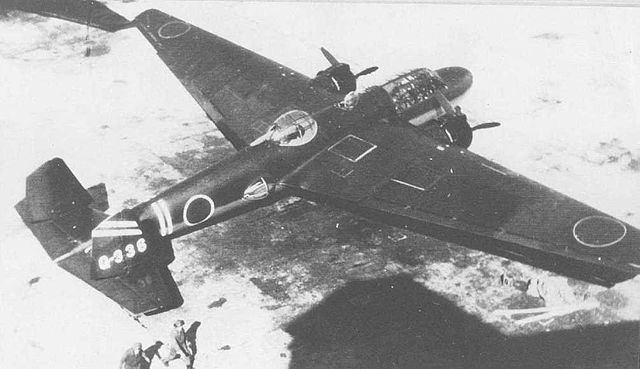
Various G3Ms in the Pacific and China
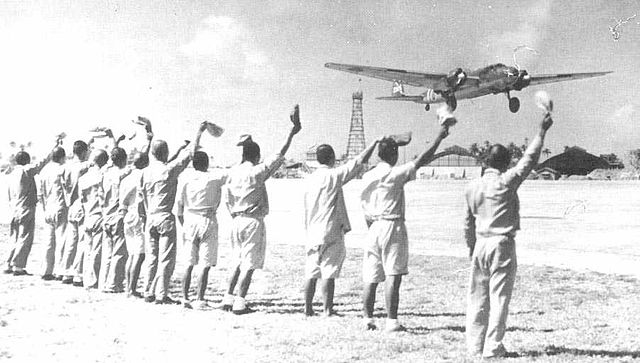
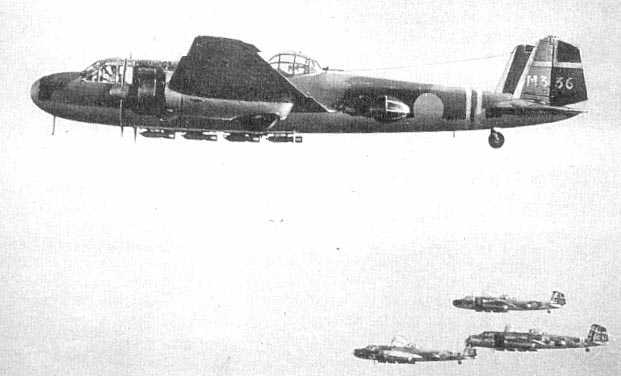
Four “Type 96 Rikko strike aircraft” in formation
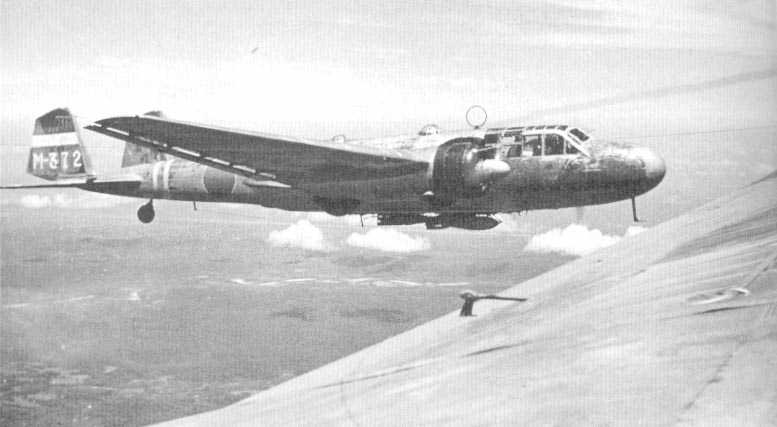
G3M of the Mihoro kokutai
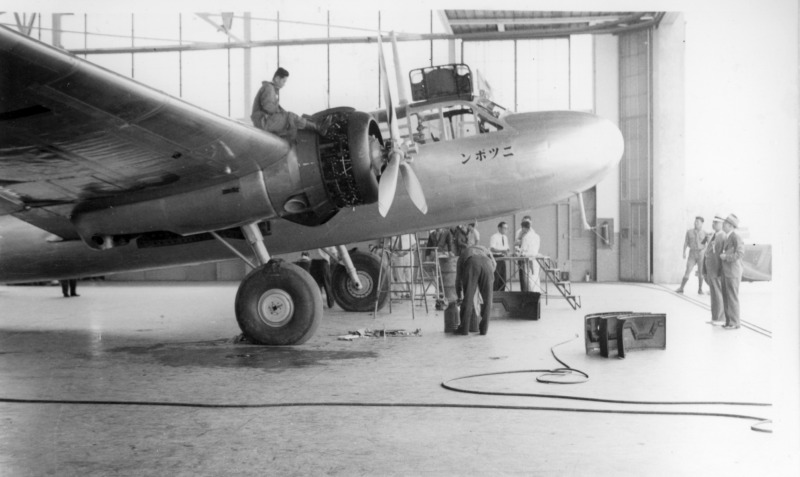
G3M1
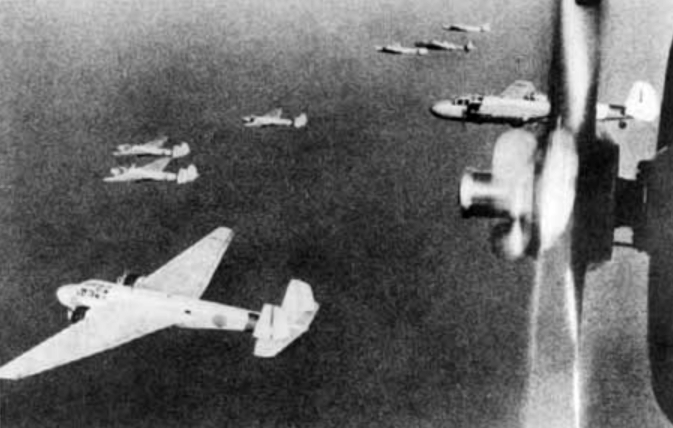
G3M2s in formation over China
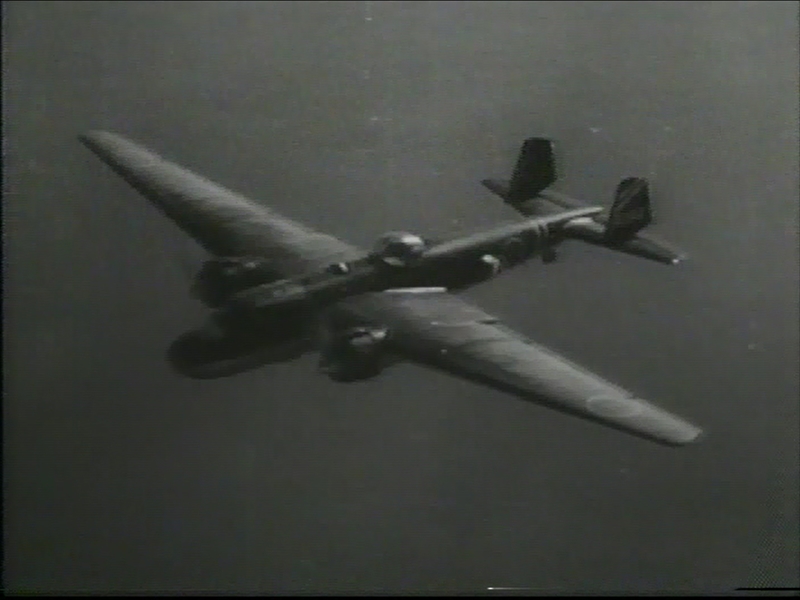
G3M at Mari oki Kaisen, foorage extract
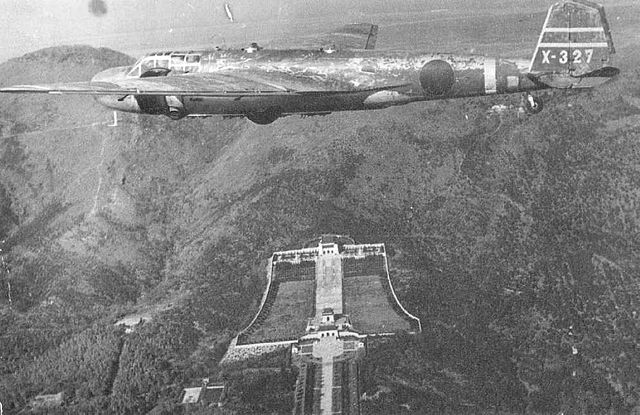
G3M2 over a temple in southern China, showing paint fatigue.
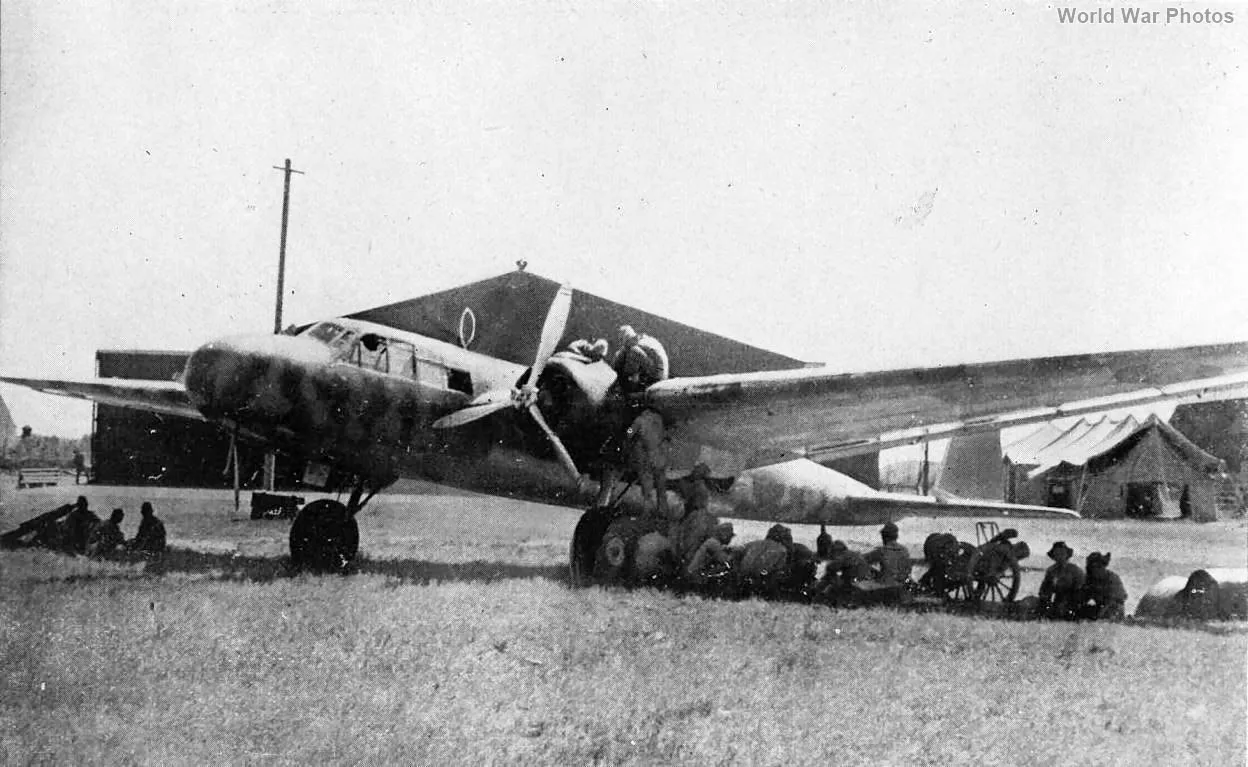
G3M1 shading resting crews between missions. One of the rare properly camouflaged machines, with a wavy pattern.
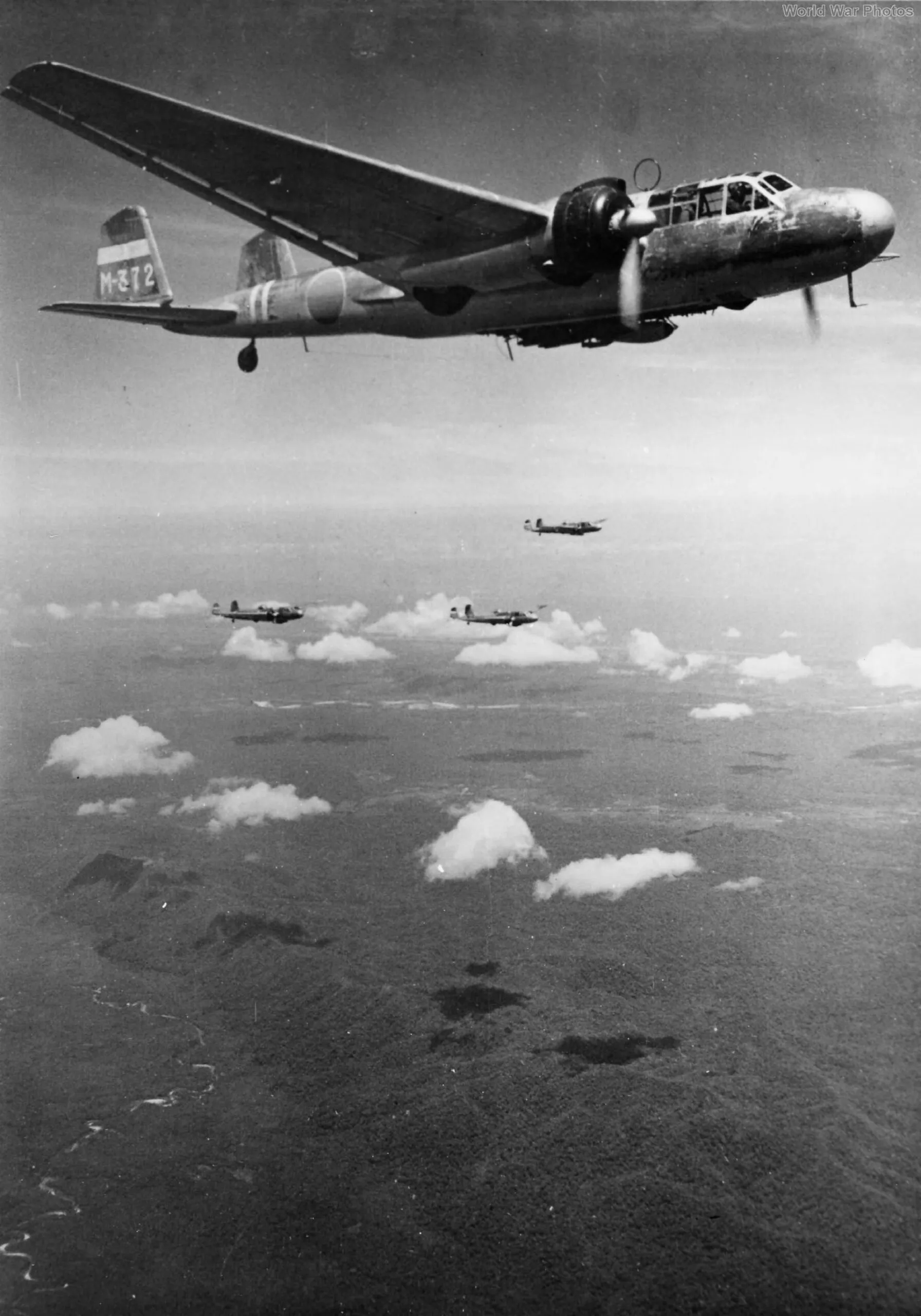
Superb photo of a formation of G3M2s M21 from Mihoro Kokutai in flight over the Pacific.
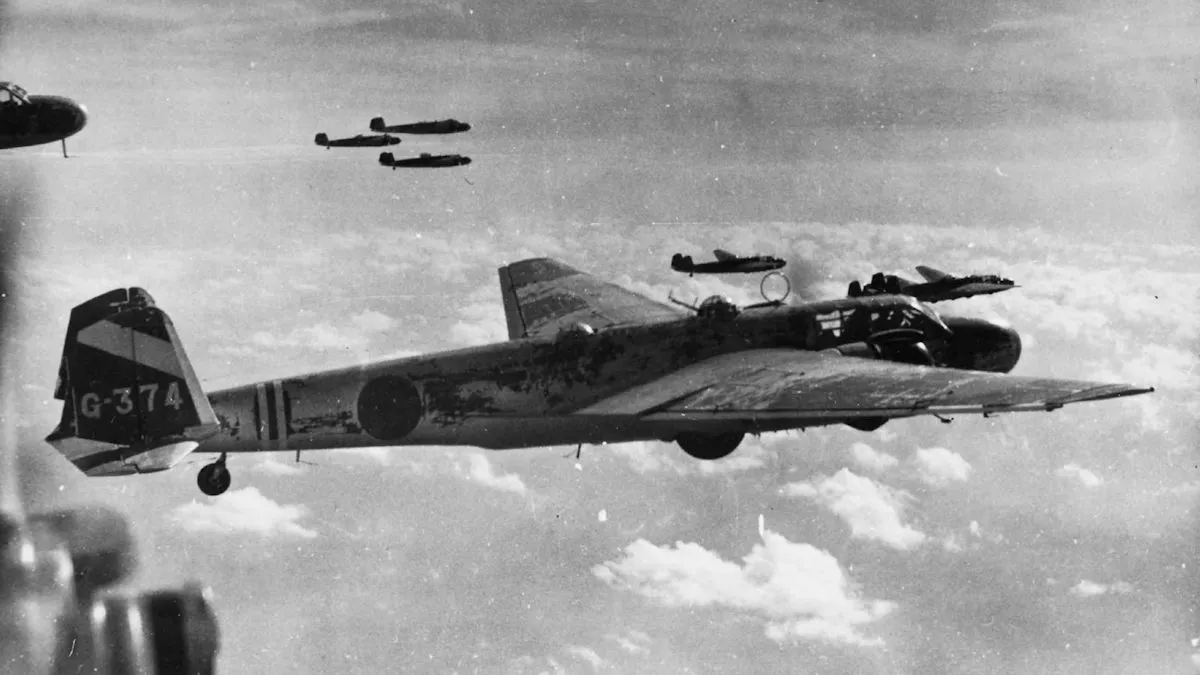
G3M2s in formation, noted the worn out original paint.

Detail of the dorsal armament of a G3M3 (Pinterest), notably the 20 mm Type 99 under the large canopy.
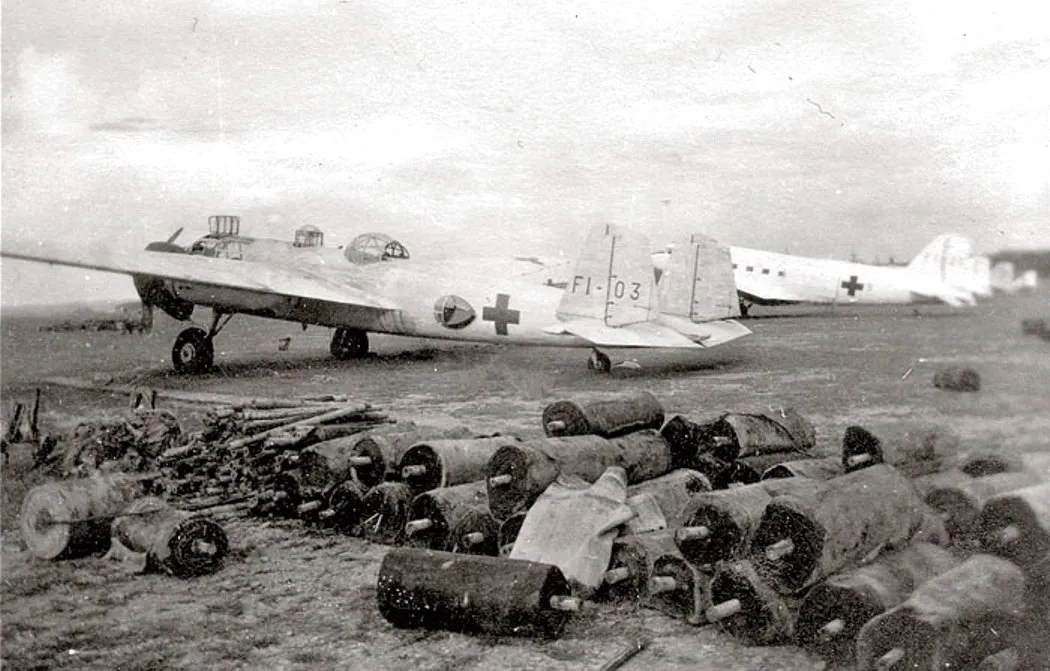
Yokosuka L3Y2 Model 12 Flying Ambulance

Mitsubishi G3M2 Model-22 in maintenance
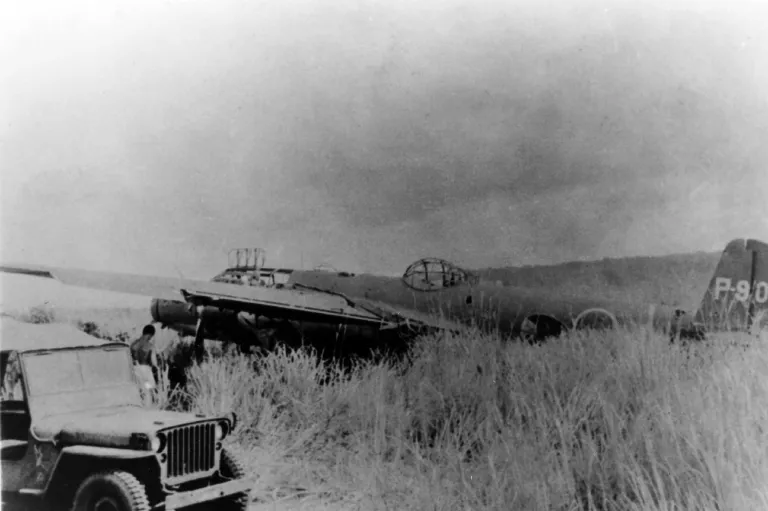
Captured-G3M3
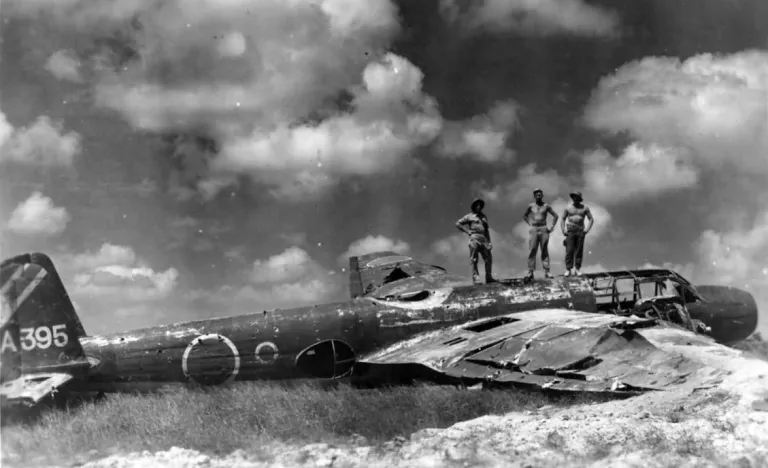
Captured G3M3(code-KEA-395), 901st kokutai, examined by Australians in New Guinea.
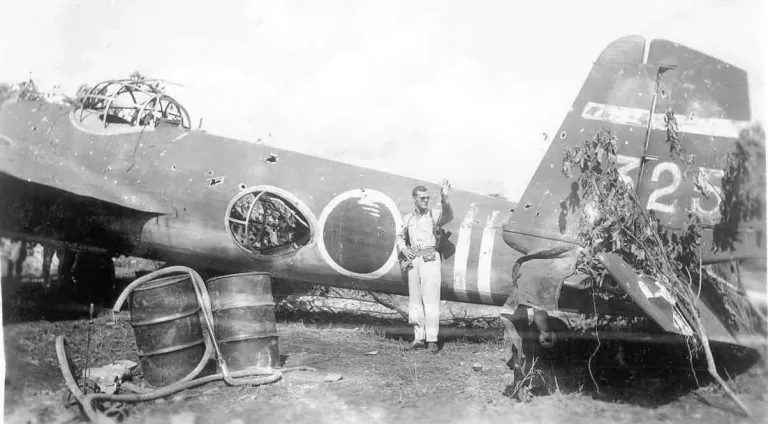
G3M2 R-329 from 707 Kokutai destroyed on the ground, examined after recapture.
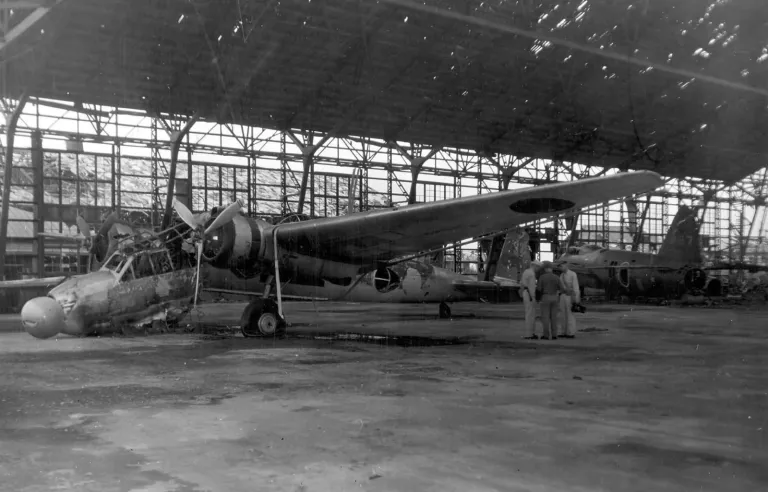
G3M and G4M wrecks in Isinomaki Airfield Hangr, September 1945


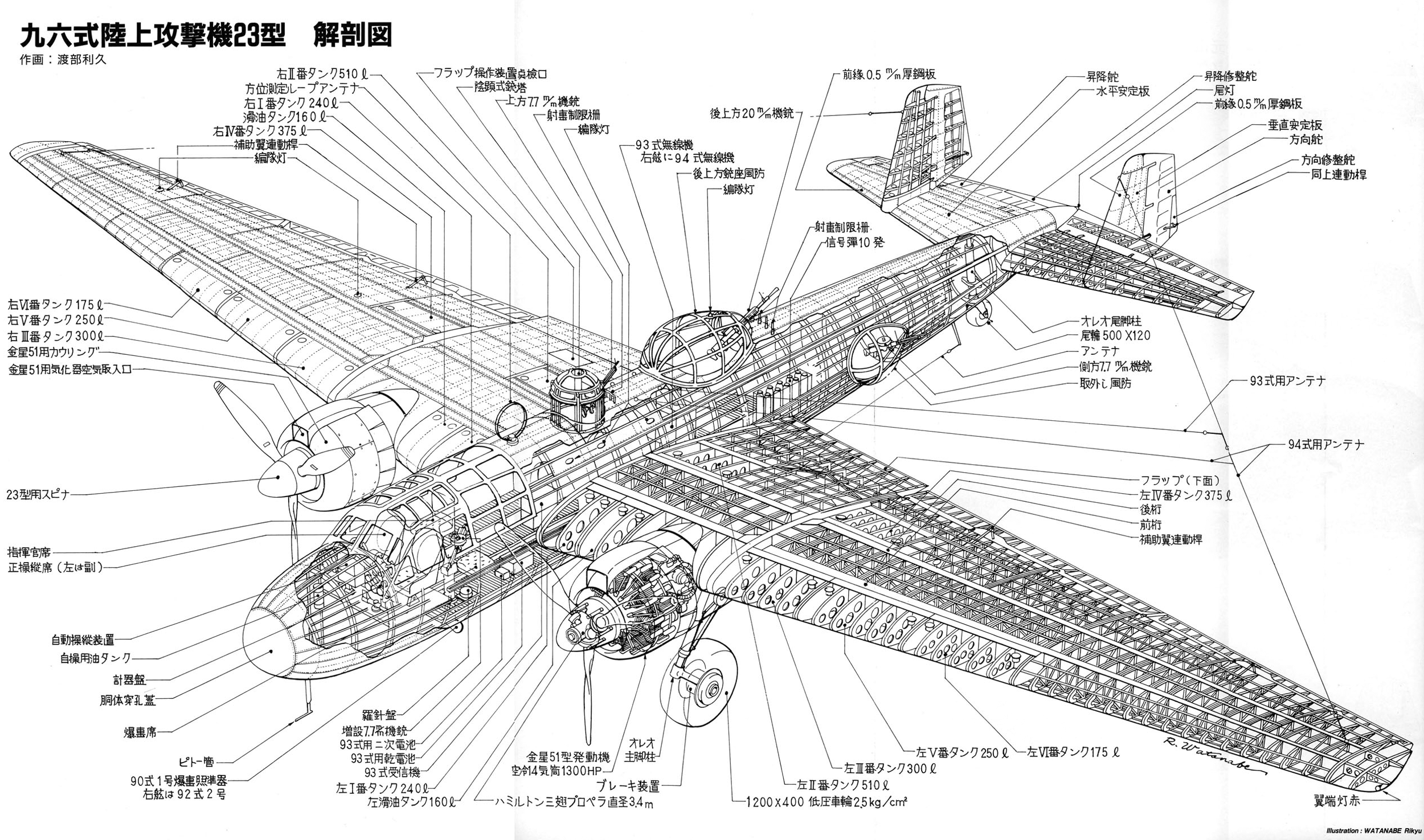
 Latest Facebook Entry -
Latest Facebook Entry -  X(Tweeter) Naval Encyclopedia's deck archive
X(Tweeter) Naval Encyclopedia's deck archive Instagram (@navalencyc)
Instagram (@navalencyc)





 French Navy
French Navy Royal Navy
Royal Navy Russian Navy
Russian Navy Armada Espanola
Armada Espanola Austrian Navy
Austrian Navy K.u.K. Kriegsmarine
K.u.K. Kriegsmarine Dansk Marine
Dansk Marine Nautiko Hellenon
Nautiko Hellenon Koninklije Marine 1870
Koninklije Marine 1870 Marinha do Brasil
Marinha do Brasil Osmanlı Donanması
Osmanlı Donanması Marina Do Peru
Marina Do Peru Marinha do Portugal
Marinha do Portugal Regia Marina 1870
Regia Marina 1870 Nihhon Kaigun 1870
Nihhon Kaigun 1870 Preußische Marine 1870
Preußische Marine 1870 Russkiy Flot 1870
Russkiy Flot 1870 Svenska marinen
Svenska marinen Søværnet
Søværnet Union Navy
Union Navy Confederate Navy
Confederate Navy Armada de Argentina
Armada de Argentina Imperial Chinese Navy
Imperial Chinese Navy Marinha do Portugal
Marinha do Portugal Mexico
Mexico Kaiserliche Marine
Kaiserliche Marine 1898 US Navy
1898 US Navy Sovietskiy Flot
Sovietskiy Flot Royal Canadian Navy
Royal Canadian Navy Royal Australian Navy
Royal Australian Navy RNZN Fleet
RNZN Fleet Chinese Navy 1937
Chinese Navy 1937 Kriegsmarine
Kriegsmarine Chilean Navy
Chilean Navy Danish Navy
Danish Navy Finnish Navy
Finnish Navy Hellenic Navy
Hellenic Navy Polish Navy
Polish Navy Romanian Navy
Romanian Navy Turkish Navy
Turkish Navy Royal Yugoslav Navy
Royal Yugoslav Navy Royal Thai Navy
Royal Thai Navy Minor Navies
Minor Navies Albania
Albania Austria
Austria Belgium
Belgium Columbia
Columbia Costa Rica
Costa Rica Cuba
Cuba Czechoslovakia
Czechoslovakia Dominican Republic
Dominican Republic Haiti
Haiti Hungary
Hungary Honduras
Honduras Estonia
Estonia Iceland
Iceland Eire
Eire Equador
Equador Iran
Iran Iraq
Iraq Latvia
Latvia Liberia
Liberia Lithuania
Lithuania Mandchukuo
Mandchukuo Morocco
Morocco Nicaragua
Nicaragua Persia
Persia San Salvador
San Salvador Sarawak
Sarawak Uruguay
Uruguay Venezuela
Venezuela Zanzibar
Zanzibar Warsaw Pact Navies
Warsaw Pact Navies Bulgaria
Bulgaria Hungary
Hungary

 Bundesmarine
Bundesmarine Dutch Navy
Dutch Navy Hellenic Navy
Hellenic Navy Marina Militare
Marina Militare Yugoslav Navy
Yugoslav Navy Chinese Navy
Chinese Navy Indian Navy
Indian Navy Indonesian Navy
Indonesian Navy JMSDF
JMSDF North Korean Navy
North Korean Navy Pakistani Navy
Pakistani Navy Philippines Navy
Philippines Navy ROKN
ROKN Rep. of Singapore Navy
Rep. of Singapore Navy Taiwanese Navy
Taiwanese Navy IDF Navy
IDF Navy Saudi Navy
Saudi Navy Royal New Zealand Navy
Royal New Zealand Navy Egyptian Navy
Egyptian Navy South African Navy
South African Navy






























 Ukrainian Navy
Ukrainian Navy dbodesign
dbodesign